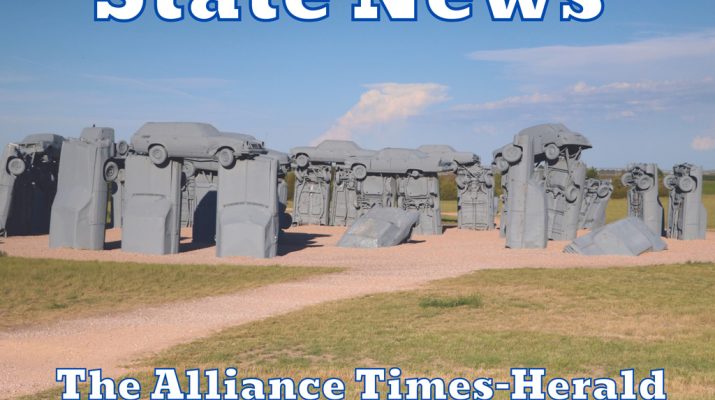By Renae Blum
Spring has come early, and with it, many opportunities for wildlife watching. Bird migration is underway, and other animals will be taking advantage of the warm weather, too.
Following are some opportunities to see wildlife in March and April. Remember to bring binoculars or spotting scopes, keep noise to a minimum and give animals their space.
Sandhill crane viewing
Witness one of the world’s greatest wildlife viewing spectacles: sandhill crane migration. More than half a million cranes descend on central Nebraska each spring to rest and refuel before continuing their journey north.
If you’re planning to watch cranes this spring, don’t wait. Migration is already well underway thanks to the mild temperatures, so make your trip sooner rather than later.
Most crane-watchers visit areas between Grand Island and Kearney, where the largest concentrations occur and resources like viewing platforms and tours are available. Places for viewing include the Crane Trust Nature and Visitor Center, Iain Nicolson Audubon Center at Rowe Sanctuary, the hike-bike trail at Fort Kearny State Recreation Area and North River Wildlife Management Area.
Northern painted turtles
Warm weather is great news for the northern painted turtle, Nebraska’s most seen turtle, which cannot produce its own body heat like mammals can. Normally from March throughout the summer, you can spot these turtles sunning themselves on rocks and logs along the edge of ponds and lakes.
These semi-aquatic turtles are brightly marked in reds, yellows and oranges on their skin, as well as their plastron, or the bottom portion of their shell. Their relatively flat shells normally are a brown, black or olive color. Venture out to a lake or pond near you and you could easily see one, or several, painted turtles.
Greater prairie-chickens
When displaying for a mate, greater prairie-chickens put on quite a show. They stamp, strut, leap, whirl, and inflate bright orange air sacs on their necks. Males also utter a deep cooing call, referred to as “booming,” that may be heard a mile away.
April is considered peak time to view these colorful mating displays in Nebraska. Viewing opportunities include free, self-guided blinds on public land and guided blind visits packaged with lodging and/or breakfast. These courtship displays can be seen in central Nebraska and some southeastern locations, too.
Ringneck snakes
Reaching about the length of a ruler, ringneck snakes are some of Nebraska’s smallest snakes. They are also one of the first snakes to emerge from hibernation in Nebraska.
From late March through October in the eastern part of the state, you might find hundreds of these snakes huddled under rocks, logs or pieces of metal. They are olive green to gray on top and bright yellow, red and orange on their stomachs – and are not dangerous to humans.
Shorebirds
Shorebirds are worldwide travelers – and they can be seen in Nebraska. “Even though we’re not a coastal state, the diversity of shorebirds that we are able to see here rivals any coastal state,” said Joel Jorgensen, nongame bird program manager for Nebraska Game and Parks.
More than 30 species of shorebirds migrate through Nebraska, with peak viewing from mid-April to mid-May. In April, this includes Wilson’s snipe, killdeer, godwits, Baird’s sandpiper and lesser and greater yellowlegs.
Shorebirds can be spotted at wetlands, as well as shoreline mud flats – anywhere you have shallow water and mud.
Boreal chorus frogs
Have you ever heard the call of a boreal chorus frog? Their song has been described as the sound of someone running their fingers over a fine-toothed comb.
Boreal chorus frogs, which are brown and green with stripes running through their eyes and down their backs, are one of the first frogs to start calling in the spring. These frogs usually are in large groups, making the sound deafening with hundreds calling at once. Look and listen for these frogs near ponds, road ditches, lakes and wetlands from mid-March through summer.
Sharp-tailed grouse
Take the opportunity this spring to watch the incredible courtship displays of sharp-tailed grouse. Males will rapidly stamp their feet, rattle their tail feathers, spin in circles and utter cooing sounds to attract a mate. This activity happens primarily in April, mostly north of the Platte River.
One option for viewing can be found at Niobrara State Park. Reserve a spot at the park’s viewing blind through May 1; peak dates are March 15 to April 15. The blind can hold up to 12 guests. Space is limited; to book your spot and learn more, call the park office at 402-857-3373.
American white pelican
You probably know what an American white pelican looks like, but have you ever seen one in the wild? During peak migration, you may be lucky enough to see several hundred of them at a large Nebraska lake. “They’re not too uncommon or difficult to find,” Jorgensen said.
Traditionally, April is the time to see the largest numbers of these birds, but the mild weather this year means we may see peak numbers in March, Jorgensen said. They can be found swimming in large lakes or soaring overhead in vee formations like geese.
For additional tips on wildlife watching in Nebraska, visit OutdoorNebraska.gov/learn/watch-wildlife.

